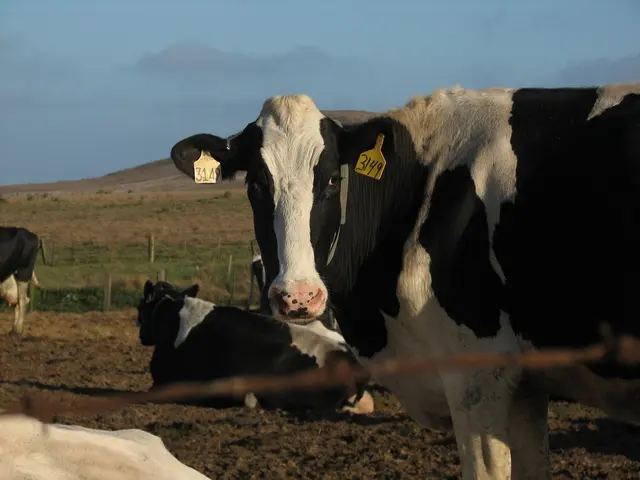Soaring High: Hamburg's Aerospace Industry Employs Nearly 49,000 Workers
Nearly 88,000 workers are part of the aeronautics sector in Hamburg. - Approximately 49,000 workers are part of the aviation industry in Hamburg
Hamburg's aerospace industry is on a roll, with almost 49,000 people employed in the sector - a remarkable 18% increase from pre-pandemic times in 2019, according to the latest study. Economics Senator Melanie Leonhard (SPD) revealed this encouraging news. The industry's gross value added even jumped by nearly 35%, or €1.8 billion, to reach €6.9 billion last year.
Hamburg stands proudly as the third-largest aerospace hub globally, trailing behind Toulouse (Airbus) in France and Arlington County (Boeing) in the US. The vigor of the industry is largely due to the world's second-largest Airbus plant in Hamburg-Finkenwerder and Lufthansa Technik at the airport, together employing close to 28,000 workers. The aerospace sector contributes significantly to Hamburg's exports, with nearly half of the city's total exports attributed to aerospace exports, Leonhard stated.
Hamburg aspires to maintain its position as a leading aerospace hub in the future, as declared by Leonhard. The study by the Institute for Innovation and Technology, commissioned by the Cluster Hamburg Aviation, provides recommendations for achieving this goal: more collaboration, less bureaucracy, improved infrastructure, targeted promotion of future technologies, and support for small and medium-sized enterprises. However, the most pressing issue remains the scarcity of skilled workers, noted Hamburg Aviation CEO Ralf Gust.
The SPD and Greens, in their coalition agreement, aim to position Hamburg prominently in the area of "Green Flying," focusing on water hydrogen applications and the production and use of synthetic kerosene. The city will support the establishment of appropriate production facilities and will advocate for funding opportunities and enabling legislation at the federal and EU levels.
Regarding the move towards a climate-neutral flight operation, Gust acknowledges that there's still a long way to go, but Hamburg already plays a pioneering role in this domain, and the maritime industry is equally involved.
Hamburg's ambition extends to constructing a production plant for sustainable aviation fuels. When the world agrees on blending quotas for sustainable energy carriers, Hamburg will be all set to implement this initiative, Leonhard indicated. Talks with industrial companies are underway, but first, the European Union needs to come to an agreement on the regulation.
Built on a foundation of around 200 patents registered between 2019 and 2024, Hamburg leads in research and development. Close to 2,900 people are engaged in research and development, with companies investing €470 million in the year 2021 and state research funds amounting to around €80 million annually.
- Hamburg
- Aerospace Industry
- COVID-19
- Melanie Leonhard
- SPD
- Coalition Agreement
- Airbus SE
- Arlington
- Boeing
- Green Flying
- Sustainable Aviation Fuel Production
A Closer Look
While the aerospace sector in Hamburg has made a satisfying comeback post-pandemic, it's essential to understand that complete recovery is yet to be achievable due to ongoing supply chain disruptions and shifts in demand[1][4]. Regional aircraft manufacturing, such as Deutsche Aircraft's new final assembly line for the D328eco in Leipzig, indicates a broader national effort to revitalize German aerospace production and innovation[3].
The German government continues to offer support for the industry, providing fiscal stimulus, liquidity support, and long-term investment in infrastructure[5]. The strategy emphasizes innovation, CO₂-neutral manufacturing, and enhanced competitiveness through advanced manufacturing facilities[3][5]. The government's approach is also centered on collaboration with industry players and regional authorities, aiming to foster new industrialization initiatives and maintain Germany's leadership in aerospace technology and manufacturing[3].
| Aspect | Current Status (2025) | Government Plans/Support ||--------------------------|---------------------------------------------|-----------------------------------------|| General Recovery | Air traffic ~20% below pre-pandemic levels | Fiscal stimulus, liquidity support[4][5] || Industry Adaptation | Focus on efficiency, cost-effective ops | Investment in innovation, modernization || Regional Manufacturing | New assembly lines (e.g., Leipzig)[3] | Support for CO₂-neutral facilities || Strategic Collaboration | Ongoing partnerships with industry/government| Encouragement of public-private ventures|
- The Hamburg aerospace industry, despite its 18% increase in employment post-pandemic, is still dealing with supply chain disruptions and shifts in demand, as stated by Melanie Leonhard, Economics Senator of SPD.
- The German government, in its endeavor to restore the aerospace industry, is focusing on investments in infrastructure and collaboration with industry players and regional authorities, as revealed in their plans for innovation, CO₂-neutral manufacturing, and enhanced competitiveness via advanced facilities.








